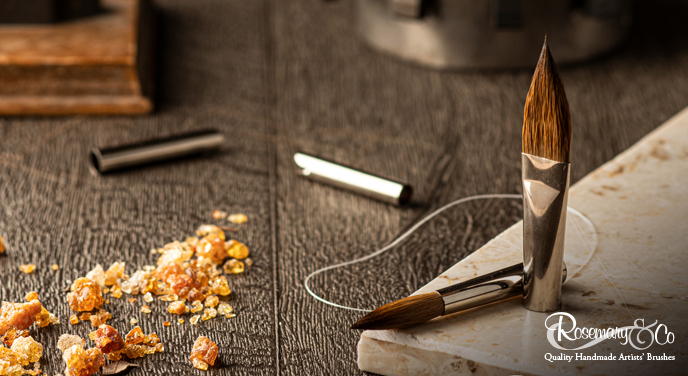icture frames aren't just about holding your artwork or photographs; they're a crucial element in showcasing and enhancing your cherished memories and favorite pieces. Choosing the right picture frame can make a significant difference in ...
Picture Framing Techniques
Tips and Methods for Framing Artwork

Picture framing is an essential aspect of showcasing artwork. It not only enhances the visual appeal of the artwork but also provides protection and preservation. As an enthusiastic Picture Framer, I am here to share some helpful suggestions and reasons for various framing techniques. Let's dive in!
Introduction
Picture framing plays a crucial role in presenting artwork in the best possible way. It involves selecting the right frame, considering the artwork type, protecting the artwork, and displaying it effectively. By following proper framing techniques, you can ensure that your artwork receives the attention it deserves.
Selecting the Right Frame
Selecting the Right Frame
The choice of frame significantly impacts the overall presentation of the artwork. It is essential to select a frame that complements the artwork while aligning with your personal style and the intended display environment.
Importance of Choosing the Right Frame
Importance of Choosing the Right Frame
The right frame can enhance the visual impact of the artwork by providing a complementary backdrop. It helps to draw the viewer's attention to the artwork itself and create a cohesive look with the surrounding space. A well-chosen frame adds a finishing touch and elevates the overall aesthetic appeal of the artwork.
Considerations for Different Artwork Types
Considerations for Different Artwork Types
Different types of artwork require specific framing techniques to bring out their best qualities. Here are some considerations for common artwork types:
Paintings on Canvas
Paintings on Canvas
When framing paintings on canvas, it is essential to consider the stretcher depth and choose a frame that complements the artwork's style. For contemporary or abstract pieces, a minimalistic float frame can create a modern and sleek look. Traditional paintings may benefit from ornate frames that enhance their classical charm.
Prints and Photographs
Prints and Photographs
Prints and photographs often benefit from the use of mats to create a visual separation between the artwork and the frame. Mats can enhance the artwork's colors and provide depth. When selecting a frame for prints or photographs, consider the image's subject matter and style to find a frame that enhances its visual impact.
Textiles and Embroideries
Framing textiles and embroideries requires special techniques to ensure proper support and protection. Using acid-free matting and UV-protective glass or acrylic can help preserve delicate fabrics while enhancing their presentation. Consider frames that complement the textile's colours and textures while providing a secure enclosure.
Matting and Mounting
Matting and Mounting
Matting and mounting techniques are crucial for enhancing the artwork's presentation and ensuring its longevity.
Matting involves placing a border around the artwork, which not only enhances its visual appeal but also provides a protective barrier between the artwork and the frame. Matting materials should be acid-free to prevent any potential damage to the artwork over time. Choosing the right colour and width of the mat can further enhance the artwork's impact and create a harmonious composition.
Mounting techniques secure the artwork within the frame, keeping it flat and preventing any movement. Hinging with acid-free archival tapes or using corner pockets are common mounting methods. These techniques ensure that the artwork remains securely in place while allowing it to expand and contract with changes in humidity.
Protecting the Artwork
Protecting the Artwork
Preserving and protecting artwork is essential to maintain its longevity and value. Here are some methods to protect your framed artwork:
UV Protection
UV Protection
Exposure to ultraviolet (UV) light can cause fading and damage to artwork over time. To protect your artwork from harmful UV rays, consider using UV-protective glass or acrylic glazing. These materials block a significant amount of UV radiation while still allowing clear visibility of the artwork.
Conservation Framing
Conservation Framing
Conservation framing techniques involve using acid-free and archival-quality materials to protect artwork from deterioration. Acid-free mats, backing boards, and tapes help prevent acidic compounds from leaching onto the artwork, which can cause discolouration and degradation. Conservation framing ensures the long-term preservation of the artwork.
Handling and Cleaning
Handling and Cleaning
Proper handling and cleaning practices are essential for preserving the integrity of framed artwork. When handling artwork, use clean gloves to prevent fingerprints and oil transfer. Regularly dusting the frame and glass with a soft, lint-free cloth helps maintain the artwork's pristine condition.
Hanging and Displaying
Hanging and Displaying
Once your artwork is properly framed, the next step is to hang and display it effectively. Consider the following tips for creating an engaging display:
Wall Placement
Wall Placement
Choose a suitable wall for your artwork display, considering factors such as lighting, wall colour, and the overall aesthetic of the room. The artwork should be the focal point of the space and easily visible to viewers.
Arrangement and Composition
Arrangement and Composition
Experiment with different arrangements to create an engaging display. You can try grouping artworks of varying sizes and styles together for a dynamic effect. Consider using a level or measuring tools to ensure your display is properly aligned and balanced.
Spacing and Balance
Spacing and Balance
Maintain appropriate spacing between frames to avoid cluttered or overcrowded displays. Achieving balance in your composition is key. You can use larger pieces as anchors and fill in the gaps with smaller artworks to create visual harmony.
DIY vs. Professional Framing
DIY vs. Professional Framing
When it comes to framing artwork, you have the option to either tackle it as a DIY project or seek professional framing services. Both approaches have their pros and cons:
DIY Framing
DIY Framing
DIY framing allows for creative freedom and cost savings. It gives you control over the entire process, from selecting materials to the final presentation. However, it requires time, skill, and access to appropriate tools and materials. If you enjoy hands-on projects and want to add a personal touch to your framing, DIY framing can be a rewarding experience.
Professional Framing
Professional Framing
Professional framing services offer expertise, experience, and access to a wide range of framing options. Framing professionals can guide you in selecting the most suitable frames, mats, and glazing materials for your artwork. Professional framing ensures a high-quality result and saves you time and effort. However, it may involve higher costs compared to DIY framing.
Preservation and Conservation
Preservation and Conservation
Preservation and conservation are crucial aspects of framing artwork, especially for valuable or delicate pieces. Here are some additional considerations:
Temperature and Humidity Control
Temperature and Humidity Control
Extreme temperature and humidity fluctuations can cause damage to artwork. It is advisable to display your framed artwork in a controlled environment, away from direct sunlight and excessive moisture. This helps prevent warping, fading, and mold growth.
Avoiding Environmental Hazards
Avoiding Environmental Hazards
Protect your framed artwork from exposure to smoke, pollutants, and moisture. These elements can cause discoloration, deterioration, and damage to the artwork. Consider using acid-free storage boxes or sleeves if the artwork needs to be stored for an extended period.
Framing Trends and Styles
Framing trends and styles evolve over time, reflecting contemporary aesthetics and design preferences. Staying updated with the latest trends can help you create a visually appealing display that aligns with current design sensibilities. Some popular framing trends include:
Minimalistic Frames
Minimalistic Frames
Clean lines, simple profiles, and minimal ornamentation characterize minimalistic frames. These frames create a modern and sleek look, allowing the artwork to take center stage.
Mixed Media Frames
Mixed Media Frames
Combining different materials, such as wood, metal, or acrylic, in a single frame can add a unique and eclectic touch to your artwork display. Mixed media frames can enhance the visual interest of the artwork and create a conversation piece.
Floating Frames
Floating Frames
Floating frames create the illusion that the artwork is suspended within the frame, without touching the edges. This technique works well for artwork on canvas, providing a contemporary and elegant presentation.
Conclusion
Conclusion
Effective picture framing techniques are essential for showcasing artwork in the best possible way. By selecting the right frame, considering different artwork types, using proper matting and mounting techniques, and protecting the artwork, you can create visually stunning displays that enhance the overall aesthetic appeal. Whether you choose to tackle framing as a DIY project or seek professional services, remember to prioritize preservation and conservation to ensure the longevity of your artwork.
"Don't settle for ordinary frames.
Experience the PDR Custom Framing difference with a personalized design consultation."
Unique Facts:
Did you know that picture framing dates back to ancient civilizations? The Egyptians and Greeks used frames to enhance the presentation of their artwork.
The choice of frame material can impact the preservation of artwork. For example, wooden frames made from acidic materials can release harmful compounds that damage the artwork over time.
The use of mats in framing artwork not only enhances visual appeal but also provides a buffer that helps prevent the artwork from touching the glass directly.
The framing industry has seen significant advancements in UV-protective glazing materials, which can block up to 99% of harmful UV rays while maintaining clarity and visibility.
Conservation framing techniques, such as using acid-free materials and reversible mounting methods, are crucial for preserving valuable and delicate artworks for future generations.
Leave a Comment 👋
Leave a Comment 👋

How to Hang Picture Frames and Art Professionally
A short guide how to hang picture frames and art professionally that will eliminate all confusion.



